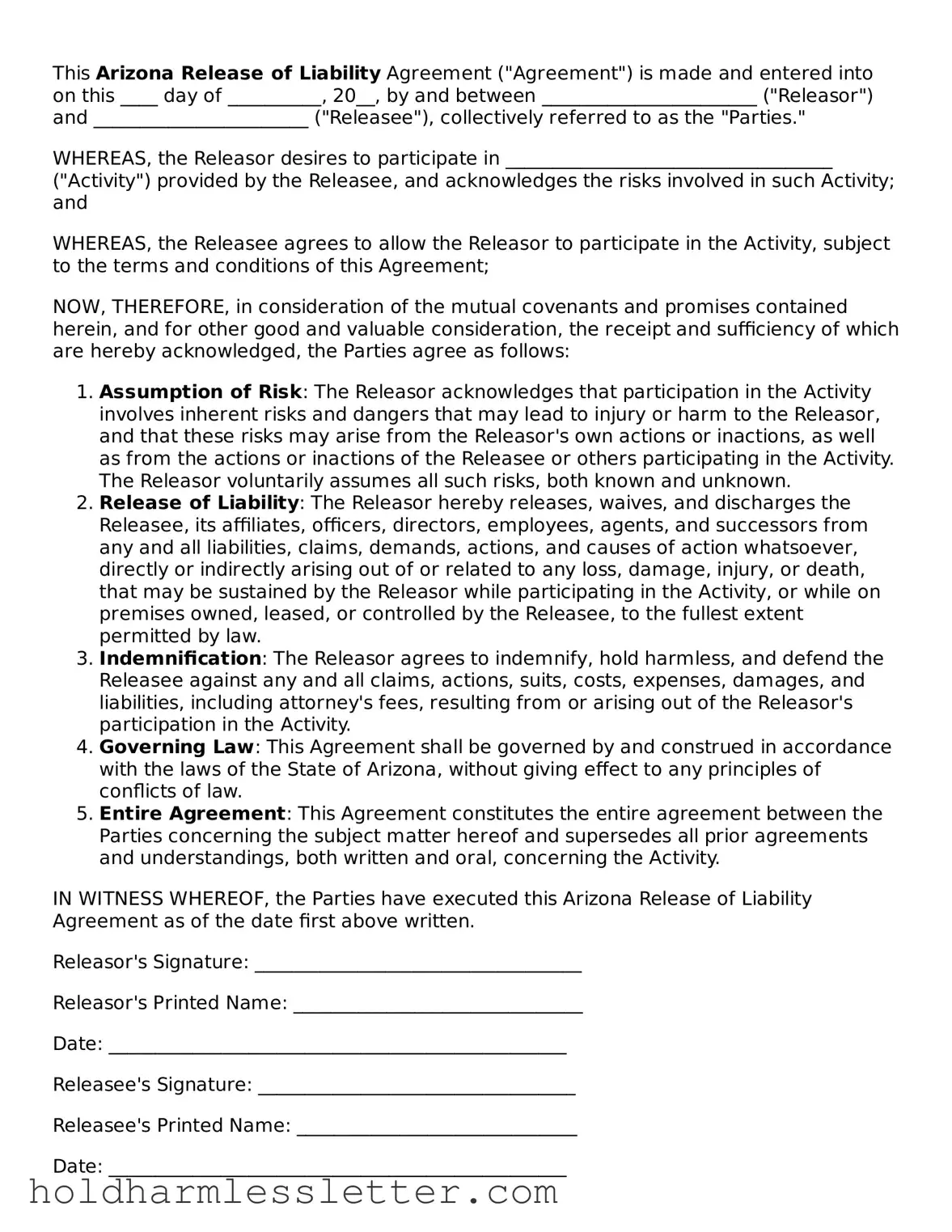What is an Arizona Release of Liability form?
An Arizona Release of Liability form is a legal document used to discharge one party's responsibility towards another in the event of an accident or any loss. This document is commonly used in transactions such as the sale of a vehicle, where the seller aims to protect themselves from future legal claims regarding the vehicle once it's sold.
When should I use an Arizona Release of Liability form?
You should use this form during transactions where you wish to transfer the risk of potential legal claims to another party. A typical scenario is selling or transferring ownership of a vehicle. Completing this form helps ensure that you are not held liable for any future incidents or issues arising with the vehicle after the sale.
Is the Arizona Release of Liability form mandatory?
While not always mandatory, it is highly recommended. The Arizona Department of Transportation (ADOT) suggests using this form as part of a vehicle transaction to protect the seller from future liability. It is considered a good practice to complete this form to avoid potential legal issues.
What information is needed to complete the form?
To complete the form, you'll need detailed information about the transaction, including the date of sale, vehicle identification number (VIN), make and model of the vehicle, the sale price, and detailed information about the buyer and seller. Signatures of both parties are also required to validate the agreement.
How does an Arizona Release of Liability form protect me?
This form protects you by legally documenting the transfer of risk from you to the buyer. Once the transaction is completed and the form is signed by both parties, you are generally no longer liable for what happens to the vehicle. This can include accidents, fines, or any illegal activities performed with the vehicle thereafter.
Can I complete the Arizona Release of Liability form online?
Yes, the Arizona Department of Transportation offers online services that allow you to complete and submit the Release of Liability form electronically. This digital submission is convenient and ensures that the department receives the information quickly.
What happens if I don’t submit an Arizona Release of Liability form?
If you don’t submit the form, you may remain liable for incidents or legal actions related to the vehicle, even after the sale. This can include traffic violations, accidents, or any misuse of the vehicle by the new owner. Submitting the form is a key step in protecting yourself from such liabilities.
Do both parties need to sign the Arizona Release of Liability form?
Yes, for the release of liability to be effective, both the buyer and the seller must sign the form. This ensures that there is a mutual agreement on the transfer of liabilities related to the vehicle and that both parties acknowledge the transaction.
Where can I find an Arizona Release of Liability form?
You can find the form available for download on the Arizona Department of Transportation’s official website. Moreover, various legal document services also offer the form, sometimes with additional guidance on how to fill it out and submit it properly.
